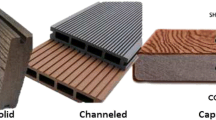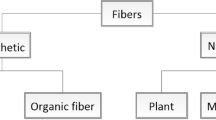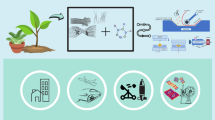Abstract
The aim of this paper is to contribute to an improved understanding of deformation mechanisms of paperboard in the deep drawing process with immediate compression which reaches the highest degree of formability. Experiments with different fiber types and material structures were conducted on a laboratory and pilot scale to determine the major material-related influences on the formability of paperboard. The different fiber type combinations were studied together with different additives. The results show that increased pore volume and fiber-to-fiber mobility significantly increase initial wrinkle height which is significant for the quality of the drawn three dimensional (3D) structure. A material structure consisting of a mixture of cellulose fibers and a low percentage of stiff regenerated cellulose or synthetic staple fibers in combination with alkyl ketene dimer or cationic wax as an additive leads to a wrinkle-free wall until a forming ratio (forming height divided by base diameter) of at least 0.22 is reached. Accordingly, the process can be broken down into three phases. In the first phase, the cellulosic structures are deformed or broken, and the material density is reduced due to fiber-to-fiber movement. Refining and wet pressing decrease pore volume, increase the number of bonds in the material, thereby obstructing fiber-to-fiber movement. In the second phase, wrinkles occur. The introduced bending stiffness index together with the tensile index provides an indication of the material behavior in these two phases. The third phase is a restructuring of the material structure and a fixation of wrinkles by creating new bonds in the limited wrinkle areas. The experiments indicate that refined fibers make significantly higher wrinkle strength possible and thus better fixation of the final 3D structure shape. Additives with low melting temperatures can also contribute to improved wrinkle strength even in a low mass percentage of 0.5 %.


















Similar content being viewed by others
References
Hauptmann M (2010) Die gezielte Prozessführung und Möglichkeiten zur Prozessüberwachung beim mehrdimensionalen Umformen von Karton durch Ziehen. Dissertation, Technische Universität Dresden
Hauptmann M, Majschak JP (2011) New quality level of packaging components from paperboard through technology improvement in 3D forming. Packag Technol Sci 24(7):419–432
Hauptmann M, Majschak JP (2012) Innovation aus Karton – Möglichkeiten der Formgestaltung von Verpackungskomponenten. In: Proceedings of the 7th conference on processing machines and packaging technology (VVD), Dresden, pp 449–460
Hauptmann M, Lohse H, Majschak JP, Helduser S (2009) Flexible Verpackungskomponenten durch mehrdimensionale Umformung von Papier und Karton. In: Proceedings of the 6th conference on processing machines and packaging technology (VVD), Dresden, pp 209–225
Hauptmann M, Ehlert S, Majschak JP (2014) The effect of concave base shape elements on the three dimensional forming process of advanced paperboard structures. Packag Technol Sci 27(12):975–986
Leminen V, Tanninen P, Mäkelä P, Varis J (2013) Combined effect of paperboard thickness and mould clearance in the press forming process. BioResources 8(4):5701–5714
Lohse H, Hauptmann M, Weber J, Helduser S, Majschak JP, Enz B, Helbig A (2010) Ziehen von Papier und Karton, Elektrohydraulisches Antriebssystem ermöglicht flexible Prozessgestaltung. Ölhydraulik und Pneumatik 54(4):118–123 and 54(5):192–196
Mozetic L (2008) Design and development of a laboratory equipment for forming of double-curved paperboard surfaces, Master thesis, KTH, Stockholm
Östlund M, Borodulina S, Östlund S (2011) Influence of paperboard structure and processing conditions on forming of complex paperboard structures. Pack Technol Sci 24(6):331–341
Svensson A, Lindström T, Ankerfors M, Östlund S (2013) 3D-shapable thermoplastic paper materials. Nord Pulp Pap Res J 28(4):602–610
Vishtal A, Retulainen E (2012) Deep drawing of paperboard, the role of material properties. Bioresources 7(3):4424–4450
Vishtal A, Retulainen E (2014) Improving the extensibility, wet web and dry strength of paper by addition of agar. Nord Pulp Pap Res J 29:434–443
Vuoti S, Laatikainen E, Heikkinen H, Johansson LS, Saharinen E, Retulainen E (2013) Chemical modification of cellulosic fibers for better convertibility in packaging applications. Carbohydr Polym 96(2):549–559
Wallmeier M, Hauptmann M, Majschak JP (2014) New methods for quality analysis of deep-drawn packaging. Packag Technol Sci 28(2):91–100
Zeng X, Vishtal A, Retulainen E, Sivonen E, Fu S (2013) The elongation potential of paper—how should Fibres be deformed to make paper extensible? Bioresources 8(1):472–486
Acknowledgments
The authors greatly acknowledge the support of the German Federation of Industrial Research Associations (AiF) and the German Federal Ministry for Economic Affairs and Energy (BMWi) through funding of the 16578BR project.
Author information
Authors and Affiliations
Corresponding author
Rights and permissions
About this article
Cite this article
Hauptmann, M., Wallmeier, M., Erhard, K. et al. The role of material composition, fiber properties and deformation mechanisms in the deep drawing of paperboard. Cellulose 22, 3377–3395 (2015). https://doi.org/10.1007/s10570-015-0732-x
Received:
Accepted:
Published:
Issue Date:
DOI: https://doi.org/10.1007/s10570-015-0732-x




